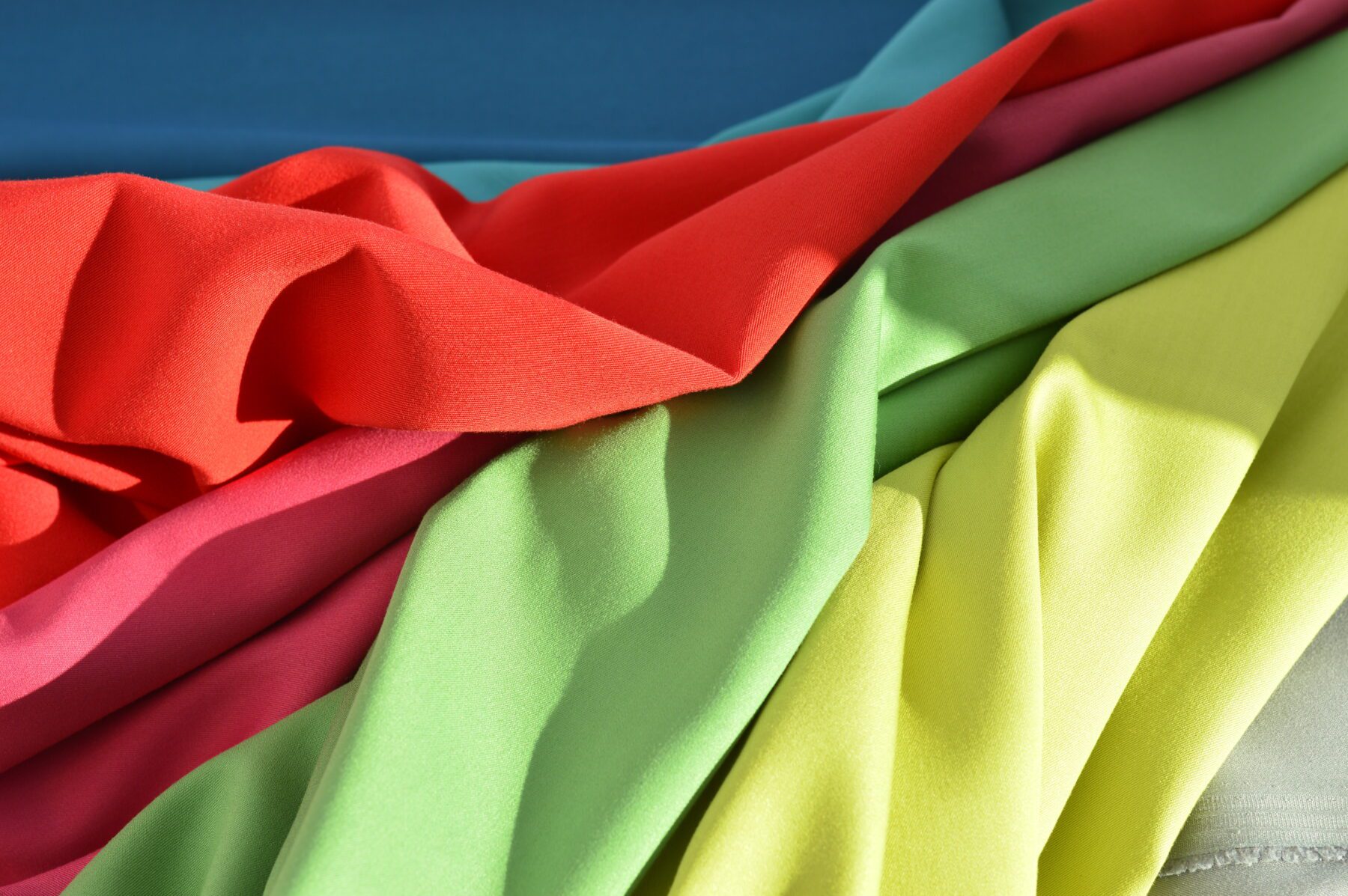
Before you start spotting your designs on the beach or in a window of a boutique, building a wholesale fabric story is essential to the process of developing an apparel brand. Many different aspects such as structure, contents, color, and more go into planning a fabric story for a collection. Whether you are creating swimwear, activewear, or couture, starting with research sets any brand up for success.
Begin identifying the type of fabric about which you will be inquiring. Once the fabric is selected, build a specification sheet to determine all properties and components featured in the final collection. Analyzing the fabric details will help with constructing, marketing, and selling your final pieces.
What is a Wholesale Fabric Story?

There are over two dozen things to consider when selecting the suitable fabrics for your collection. It is essential to be thoughtful about all of these areas to avoid choosing the wrong fabric and negatively impacting your collection. Don’t fret! PCF has all the information for building a wholesale fabric story below
________________________________________________________________________________________
Common Uses

The idea for your apparel line will help you define the common uses of the fabric. For example, when creating an activewear collection, stretch fabric is suggested. Thinking outside the box will push the boundaries of creativity. Can you break the rules and use them differently? Can an upholstery fabric be used for a formal gown?
_________________________________________________________________________________________
Structure

The structure of the material will depend on its construction and machinery used by the textile mill. Fabrics classifications include three structure groups; wovens, knits, and non-woven. Depending on the type of apparel collection you’re producing, the fabric structure will be essential to determine which fabric to use.
_________________________________________________________________________________________
Properties

Note the properties of the fabric and how they might impact its performance. Some fabrics utilize marketing that promotes their technical properties, performance attributes, or beneficial finishes. In contrast, other fabrics may not have detailed information—select fabrics with properties that fit your vision for the collection.
_________________________________________________________________________________________
Color

Select fabrics that can achieve your desired color palette either through dyeing or printing. Coloration may vary based on different materials, for example, recycled bases, unbleached natural fibers, or achieving neon/vivid colors on synthetic fibers.
_________________________________________________________________________________________
Texture
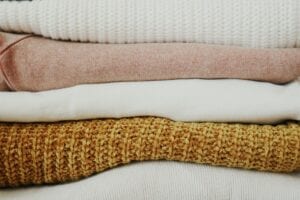
Texture impacts the appearance of color as well as affecting the fit and drape of a garment. Texture creates subtle interest where print may not be suitable. Some printed patterns read as texture to the eye, which is another way to add dimension to a garment.
_________________________________________________________________________________________
Contents

The contents of a fabric impact many of its properties and cleaning instructions. Certain fibers may fall outside of the concept for your collection. It is crucial to have an accurate understanding of which fibers compose the fabric. Research and knowledge of textiles are essential for marketing and selling the end garment.
_________________________________________________________________________________________
Weight

The weight of fabric varies based on its fibers and yarns—different weights of fabrics, when mixed, may have undesirable effects when building the collection. Fabrics are most commonly measured in grams per square meter (gsm) and ounces per linear yard(oz/yd).
_________________________________________________________________________________________
Width
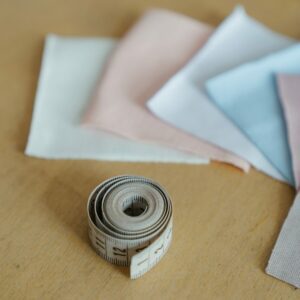
The width of fabric can vary significantly based on its structure or intended end-use. The width is important to consider when making graded markers for multiple sizes. Fabrics with narrow widths will reduce your product yield, so you may need to order extra yardage or adapt your pattern design depending on the garments.
_________________________________________________________________________________________
Care Instructions
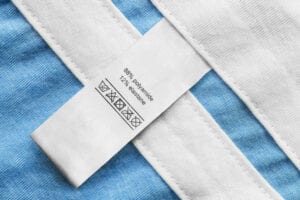
Note the care instructions for different fabrics, especially when mixing them. It is the law that you include washing instructions on the inner tags of your garments when selling your collection. It is recommended to pre-wash fabrics before sewing into garments and run tests on your care instructions during the prototyping stage.
_________________________________________________________________________________________
Hand
The feel of the fabric can be the deciding factor for the customer’s purchase. Take time to handle many similar fabrics to understand the subtle difference in hand. Different finishes can be applied to soften further or stiffen fabrics; ask your Fabric Specialist to learn more about these options.
_________________________________________________________________________________________
Drape

Fabrics hang differently based on many of the points noted prior. Take time to play with your fabric selections and allow them to drape to observe how they respond to movement.
_________________________________________________________________________________________
Fabric Manipulation

Consider how the fabric takes darts, pleats, ruching, ruffles, and gathers. Many of these manipulations can affect the fit and appearance of your apparel.
_________________________________________________________________________________________
Treatments and Finishes
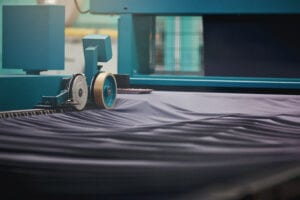
Fabrics can undergo chemical treatments or mechanical finishes. These can apply a variety of properties that are not inherent in the fabric. Finishes and treatments applied to fabrics can be used to elevate your collection’s properties. Some of the finishes available during fabric production include brushing, chintz/cire, sueding, and peaching. Treatments often involve non-hazardous chemicals or minerals to apply water resistance, wicking, stain-resistant, wrinkle-resistant, and anti-microbial/viral properties.
_________________________________________________________________________________________
Printing Methods

Fibers can undergo specific printing methods. If you intend on printing understand the different methods that may or may not be suitable. At PCF we have separate print libraries for Nylon and Polyester since those base fabrics print differently depending on the fiber content. For information about our custom printing Pick-A-Print program, please visit the link here.
_________________________________________________________________________________________
Manufacturing

Consider the ethics and facilities you a doing business with. Pine Crest enjoys working with many ethically friendly apparel manufacturers and fabric mills. This is important to our business and should be important to the concept of your collection. Do the research and determine where you best fit. We are happy to share resources, so if you have any questions regarding apparel manufacturers, please contact a Fabric Specialist today!
_________________________________________________________________________________________
Sustainability

Learn about crucial sustainability and ethics certifications as a better understanding of how your fabrics are produced. Keep in mind, adhering to high eco-conscious standards may impact the costs or the quality/performance of the fabrics.
_________________________________________________________________________________________
All of the individual aspects of the fabric will help you choose the material for your following collection. Creating a checklist to nail down these items is highly recommended. As you start to create your designs, it will be easier to go back and reference the information. Not only does it help designers stay organized, but many manufacturers require detailed specification sheets to identify the fabric. All in all, planning your wholesale fabric story will save time and energy by gathering all the specification information above before starting the collection.
Resources –







